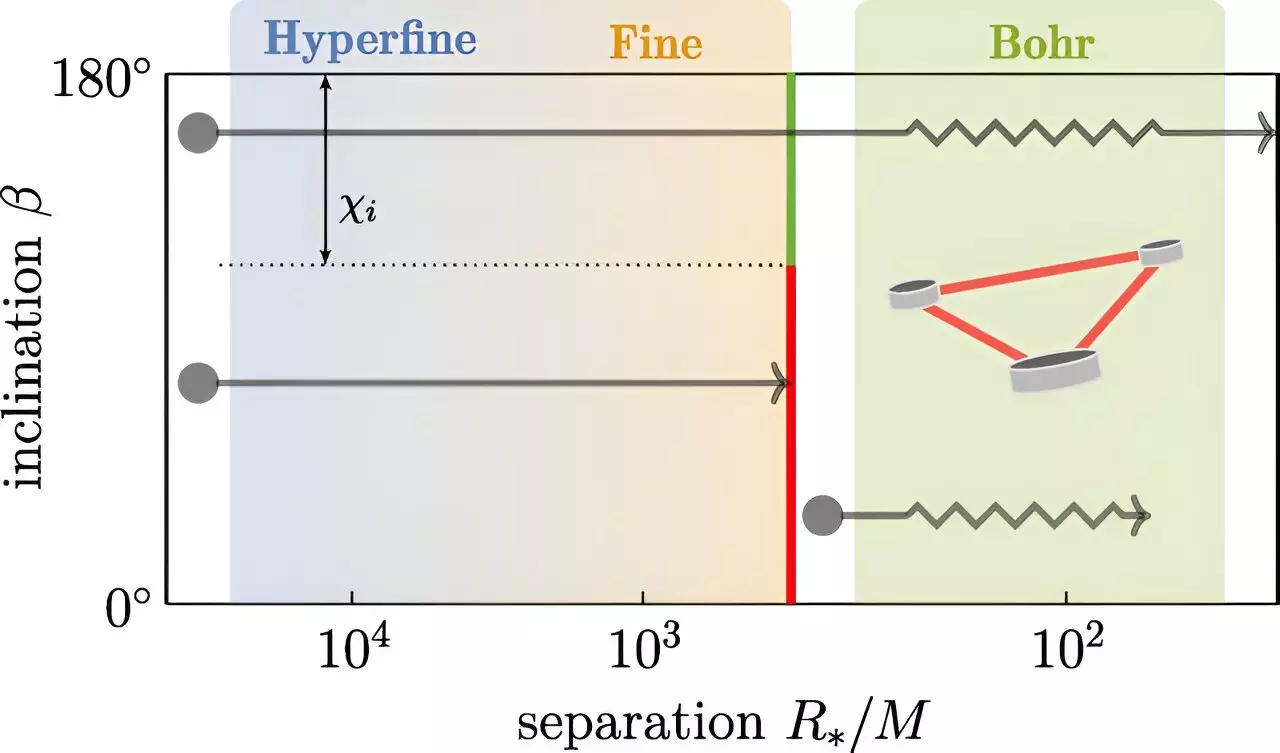The cosmos is a vast, mysterious expanse, and recent research by physicists from the University of Amsterdam and the Niels Bohr Institute in Copenhagen has opened a potential window into unveiling new subatomic particles through the lens of black hole mergers. Published in *Physical Review Letters*, this groundbreaking study combines insights gleaned over six years to propose that gravitational waves—ripples in spacetime generated by the merging of black holes—may carry hidden information about these elusive particles.
Gravitational waves are often described as the universe’s symphonic echoes, produced by cataclysmic events such as the collision of black holes. These waves offer a unique method of probing the universe’s secrets, as they contain intricate details regarding the orbits and interactions of the colliding masses. As black holes spiral towards one another, they emit gravitational waves that encapsulate the story of their dance, revealing information about their mass, spin, and speed. The new research proposes that by studying these waves closely, scientists can glean insights into the presence of ultralight bosons—hypothetical particles that are significantly lighter than those explored in traditional particle physics.
At the heart of this investigation lies a phenomenon known as black hole superradiance. This process occurs when a rapidly spinning black hole sheds a fraction of its mass, creating a “cloud” of ultralight particles that encircle it. The analogy likening this to a “gravitational atom” is particularly fitting. Just as an electron orbits a proton in an atom, these particles exist in a state around the black hole, potentially offering clues about physics beyond the Standard Model. As such clouds form, they can dramatically influence the gravitational dynamics of their hosts.
The research draws upon a series of influential papers authored by University of Amsterdam scientists that shed light on the orbital motion of binary black holes in conjunction with ultralight boson clouds. Key findings include the identification of phenomena called resonant transitions, wherein the particle cloud can “jump” states, akin to electronic transitions in atoms. Ionization is another emerging concept in this study, characterized by the ejection of parts of the cloud—both phenomena significantly impact the emitted gravitational waves and leave unique signatures that can be analyzed.
This meticulous analysis yields two distinct evolutionary outcomes for black hole-cloud systems. If the black holes and the surrounding cloud rotate in opposite directions, potential for the cloud’s survival exists, and it can be detected through the ionization effects it imparts on the gravitational wave signals. Conversely, if the motion is aligned, the cloud will face destruction, leading to remnants that could be measured through specific changes in the black hole binary’s orbital characteristics, including eccentricity and inclination.
The implications of this research extend far beyond academic curiosity. As scientists improve their techniques for gravitational wave detection, they stand on the threshold of possibly measuring these unique signatures. In doing so, they could confirm or refute the existence of new particles that may illuminate longstanding enigmas in astrophysics and cosmology. The findings create a clear search strategy for these ultralight bosons: either through distinct markers of ionization found in gravitational waveforms or through systematic anomalies in orbital parameters.
The confluence of these ideas heralds an exciting frontier in the realms of astrophysics and particle physics. By scrutinizing the fabric of spacetime through the lens of gravitational waves, physicists may soon unravel the complexities of particle interactions in the universe. If the presence of ultralight bosons is confirmed, it would not only provide substantial evidence for theories beyond the established frameworks of physics but also deepen our understanding of the cosmos’s fundamental nature. As future gravitational wave observations roll in, the potential for revolutionary discoveries awaits.

